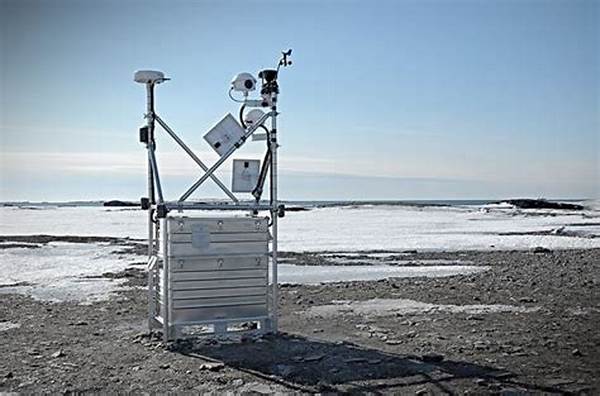The Importance of Satellite Systems in the Arctic
The Arctic region, characterized by its frigid temperatures and extreme environmental conditions, has long been a subject of scientific intrigue and geopolitical significance. With climate change taking a pronounced toll on this fragile ecosystem, accurate and consistent monitoring has become imperative. Satellite systems for Arctic monitoring stand at the forefront of these efforts, providing invaluable data for researchers, policymakers, and environmentalists alike. Through advanced technological capabilities, these systems can capture high-resolution imagery and vital environmental information, which are essential for understanding the dynamic changes occurring within the Arctic Circle.
Moreover, satellite systems for Arctic monitoring enable the continual observation of ice cover, sea surface temperature, and atmospheric conditions, contributing significantly to climate models and predictions. These sophisticated systems offer a unique vantage point, allowing for uninterrupted surveillance over vast and remote areas that are otherwise inaccessible by traditional means. Consequently, they play a pivotal role in assessing the environmental impacts of climatic variations, enabling informed decision-making regarding conservation strategies and policy formulation. The enhancement of these satellite systems is crucial to ensuring a sustainable future for the Arctic environment and its diverse ecosystems.
Key Features of Satellite Systems for Arctic Monitoring
Satellite systems for Arctic monitoring are equipped with state-of-the-art sensors capable of detecting minute environmental changes. These systems offer comprehensive data acquisition, ensuring high precision in monitoring activities. The integration of multiple satellite data sources provides a multi-faceted approach to understanding Arctic conditions. Additionally, real-time data processing capabilities enable timely analysis and responsive action plans. The technological advancements in satellite systems significantly bolster the accuracy of environmental assessments in the Arctic region.
Real-Time Monitoring and Data Collection
An essential aspect of satellite systems for Arctic monitoring is their ability to facilitate real-time data collection and transmission. This capacity allows scientists to observe changes as they occur, providing a dynamic view of the region’s environmental conditions. The continuous flow of data enhances the understanding of temporal variations, enabling researchers to identify trends and anomalies promptly. Furthermore, real-time monitoring supports immediate responses to emerging issues, which is critical in minimizing potential adverse impacts on the ecosystem.
Through the seamless collection of data, these satellite systems contribute to a robust repository of information, which is indispensable for climate research and policy development. The vast datasets accumulated over time aid in validating climate models, thereby refining predictions about future climatic scenarios. Such insights are pivotal for devising strategic interventions aimed at mitigating the effects of climate change on the Arctic and its biodiversity. Consequently, the advancement of satellite systems for Arctic monitoring remains a high priority in the quest to safeguard this vital region.
Strategic Implications of Satellite Systems for Arctic Monitoring
The deployment of satellite systems for Arctic monitoring holds significant strategic implications both environmentally and geopolitically. By facilitating detailed environmental assessments, these systems guide conservation efforts and resource management policies in the Arctic. The insights gained from satellite data help in identifying areas that require immediate attention, thus enabling effective allocation of resources. Moreover, the geopolitical landscape of the Arctic, marked by competing territorial claims and natural resource interests, benefits from the transparency and objectivity that satellite systems provide.
Furthermore, the integration of satellite systems for Arctic monitoring into international cooperative frameworks enhances global efforts in addressing climate change. Monitoring data serves as a common ground for countries to collaborate on environmental protection initiatives and policy harmonization. As the Arctic continues to experience unprecedented changes, the strategic relevance of satellite monitoring systems will only intensify, underpinning efforts to maintain regional stability and ecological balance.
Challenges and Opportunities in Arctic Satellite Monitoring
While satellite systems for Arctic monitoring offer tremendous benefits, they also present certain challenges. The harsh climatic conditions in the Arctic can affect satellite operations, necessitating robust system designs that withstand extreme environments. Additionally, the continuous improvement of sensor technology is required to maintain data accuracy and reliability. The vastness and remoteness of the Arctic pose logistical hurdles for data transmission and ground verification efforts.
Nevertheless, these challenges present opportunities for innovation and collaboration. Continued investment in satellite technology research and development can lead to enhanced monitoring capabilities. Moreover, fostering international partnerships can facilitate resource-sharing and the exchange of technical expertise, overcoming the constraints faced by individual countries. As technological and cooperative advances are realized, satellite systems for Arctic monitoring will become increasingly effective tools in addressing the multifaceted issues facing the region.
Technological Advancements in Arctic Satellite Monitoring
Recent years have witnessed remarkable advancements in the technology of satellite systems for Arctic monitoring. Innovations such as synthetic aperture radar and hyperspectral imaging have expanded the scope of environmental observation, enabling the detection of subtle changes that are crucial for climate science. The miniaturization of satellite components has led to the development of smaller, more cost-effective satellites, making monitoring more accessible to a broader range of stakeholders.
Moreover, the advent of artificial intelligence and machine learning technologies has revolutionized data processing and analysis for satellite systems. These technologies enable the extraction of meaningful insights from vast datasets with improved speed and accuracy. As these technological trends continue to evolve, the efficacy of satellite systems for Arctic monitoring will be significantly enhanced, providing a fuller understanding of the region’s evolving environmental landscape.
Summary of Satellite Systems for Arctic Monitoring
In conclusion, satellite systems for Arctic monitoring are indispensable in the ongoing efforts to comprehend and mitigate the effects of climate change on this crucial region. By providing real-time, high-resolution data, these systems offer insights into the rapidly changing conditions of the Arctic environment. This information not only supports scientific research but also guides strategic policy decisions aimed at preserving the region’s ecological integrity.
As the Arctic continues to face unprecedented environmental and geopolitical challenges, the role of satellite systems becomes increasingly significant. The strategic deployment and enhancement of these systems are imperative for fostering regional stability and promoting sustainable development. Through continued advancements and international collaborations, satellite systems for Arctic monitoring will remain pivotal in protecting the Arctic’s unique and vital contributions to the global ecosystem.





